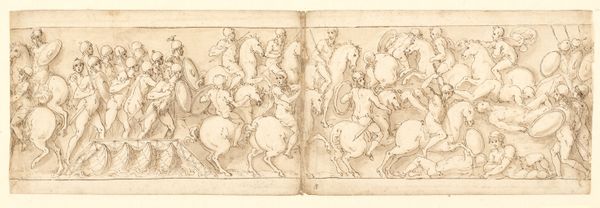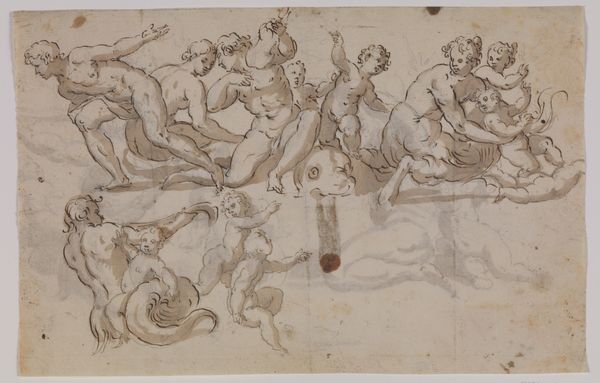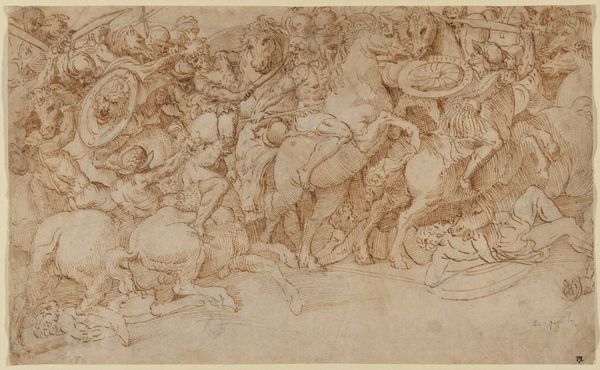
32 kopier efter Marcus Aurelius-søjlen, Piazza Colonna i Rom 1544 - 1618
0:00
0:00
drawing, pen
#
drawing
#
pen sketch
#
figuration
#
classicism
#
line
#
pen
#
history-painting
#
italian-renaissance
Dimensions: 133 mm (height) x 432 mm (width) (bladmaal)
Curator: Looking at this drawing by Giovanni Guerra, executed between 1544 and 1618, titled "32 copies after the Marcus Aurelius column, Piazza Colonna in Rome," my immediate sense is of controlled chaos, if that makes sense. Editor: It absolutely does. There’s an inherent tension in viewing this kind of classical subject matter rendered in such dynamic, almost frantic lines. Considering that this is a series of copies of the famed column of Marcus Aurelius, we can already start to unpack the themes of repetition and historical power. Curator: I see a celebration of Roman power expressed through recurring imagery and archetypes. The pen-and-ink medium offers immediacy, like a transcribed document preserving a specific historical memory. Guerra’s work gives insight into the culture that formed its aesthetics. We cannot detach artwork from its socio-political dimensions. It is always interwoven into larger networks of power, gender and class structures. Editor: And the continuous narrative of the column itself…it acts as a scroll unfurling, recounting the emperor's military victories and projecting that strength. Those repeated figures of soldiers and horses and defeated enemies all convey particular psychological resonance, almost a hypnotic suggestion of inevitable domination, passed down through generations by iconic shapes. Curator: Do you find that continuity troubling at all? We're engaging with this historical moment through Guerra’s Renaissance lens, which risks normalizing such violent imperialistic messaging. Editor: I think it is troubling! A symbol is never neutral, that's the point. To me, viewing these symbols asks for critical assessment of how symbols change meaning depending on who has the authority to tell stories with them, especially how that intersects with trauma over centuries. It invites necessary debate rather than simply allowing old stories to go on unchanged and unchallenged, don’t you think? Curator: Yes. The visual repetition allows for subtle distortions that can lead to transformation of those very ingrained ideological and societal narratives. We have to remember context and who benefits. It helps challenge the existing narratives with inclusivity. Editor: In the end, art serves to prompt these inquiries—art gives us access to reconsider ingrained patterns through both personal reflections on imagery and community action. Curator: I think that’s a perfect, thoughtful balance to reach for when seeing artworks like this one. Editor: Indeed. A dance between image, interpretation, and hopefully, action.
Comments
No comments
Be the first to comment and join the conversation on the ultimate creative platform.













